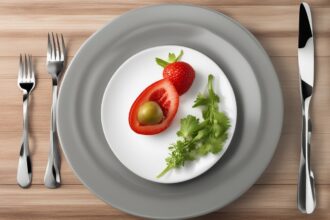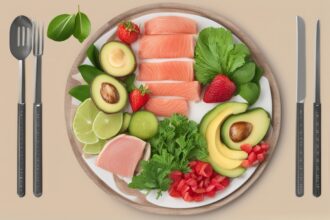Intermittent fasting has gained immense popularity as a flexible and effective approach to weight loss and overall health improvement. Among the various method5:2 diet:2 diet stands out for its simplicity and adaptability. This post dives deep into the concept of intermittent fasting meal plans, specifically tailored for the 5:2 diet, to help you achieve your health goals with practical, easy-to-follow strategies. Whether you’re a beginner or a seasoned faster, this guide will provide you with actionable insights to craft meal plans that work for you.
What Is the 5:2 Diet and Intermittent Fasting?
The 5:2 diet is a form of intermittent fasting where you eat normally for five days of the week and restrict your calorie intake to 500–600 calories on the remaining two days. This approach allows your body to enter a fasting state on the low-calorie days, promoting fat burning, improved metabolic health, and even cellular repair. Understanding how to create effective intermittent fasting meal plans for these fasting days is key to making the 5:2 diet sustainable. By planning nutrient-dense, low-calorie meals, you can avoid hunger pangs and maintain energy levels even on restricted days.
Benefits of Intermittent Fasting Meal Plans on the 5:2 Diet
One of the main reasons people turn to the 5:2 diet is its numerous health benefits. Studies suggest that intermittent fasting can aid in weight loss, improve insulin sensitivity, and reduce inflammation. Crafting well-thought-out intermittent fasting meal plans ensures you get the most out of these benefits by balancing macronutrients and prioritizing whole foods. Additionally, the flexibility of the 5:2 diet means you can enjoy your favorite foods on non-fasting days, making it easier to stick to long-term compared to traditional diets.
For more on the science behind intermittent fasting, check out our post on The Health Benefits of Intermittent Fasting.
How to Structure Intermittent Fasting Meal Plans for Fasting Days
On the two fasting days of the 5:2 diet, your calorie intake is limited, so every bite counts. A successful meal plan for these days focuses on high-protein, high-fiber foods that keep you full longer. For women, the target is around 500 calories, while men can aim for 600 calories. Here’s a sample plan:
- Breakfast (100 calories): A boiled egg with a small slice of whole-grain toast.
- Lunch (200 calories): A vegetable soup with a side of leafy greens.
- Dinner (200 calories): Grilled chicken breast (3 oz) with steamed broccoli.
Adjust portion sizes based on your calorie needs, and always prioritize hydration with water or herbal tea. Planning these meals in advance helps avoid impulsive eating and ensures you stay within your limits. Curious about hydration during fasting? Read our guide on Staying Hydrated While Fasting.
Meal Ideas for Non-Fasting Days on the 5:2 Diet
While fasting days require strict calorie control, the five non-fasting days allow for more freedom. However, this doesn’t mean you should overindulge. Focus on balanced meals with lean proteins, healthy fats, and complex carbohydrates to maintain steady energy levels. For example, a breakfast of oatmeal with berries, a lunch of quinoa salad with grilled veggies, and a dinner of baked salmon with sweet potato can keep you satisfied and nourished. Remember, the goal of intermittent fasting meal plans is not just restriction but also fostering a healthier relationship with food overall. For delicious recipes, explore our collection at Healthy Recipes for Intermittent Fasting.
Common Challenges and Tips for Success with the 5:2 Diet
Starting the 5:2 diet can come with challenges, such as hunger on fasting days or overeating on non-fasting days. To overcome these, pre-plan your meals and keep low-calorie snacks like cucumber or celery handy for fasting days. Additionally, avoid highly processed foods on non-fasting days to prevent energy crashes. Staying consistent with your intermittent fasting meal plans can also be tough if you’re not mentally prepared, so set realistic goals and track your progress. Joining a community or reading success stories can provide motivation—check out our post on Inspiring Intermittent Fasting Success Stories for a boost.
Customizing Your Intermittent Fasting Meal Plans
Everyone’s body and lifestyle are different, so your 5:2 diet meal plan should reflect your unique needs. If you’re vegetarian, focus on plant-based proteins like tofu or lentils on fasting days. If you’re active, you might need slightly more calories on non-fasting days to fuel workouts. Experiment with meal timing—some prefer two larger meals on fasting days, while others opt for three smaller ones. The key is to listen to your body and adjust accordingly. For tips on tailoring your diet, see our guide on Creating a Personalized Fasting Plan.
Disclaimer: This content is for informational purposes only and not a substitute for professional medical advice. Always consult with a healthcare professional before starting any new diet or fasting regimen to ensure it’s safe for your individual health needs.






